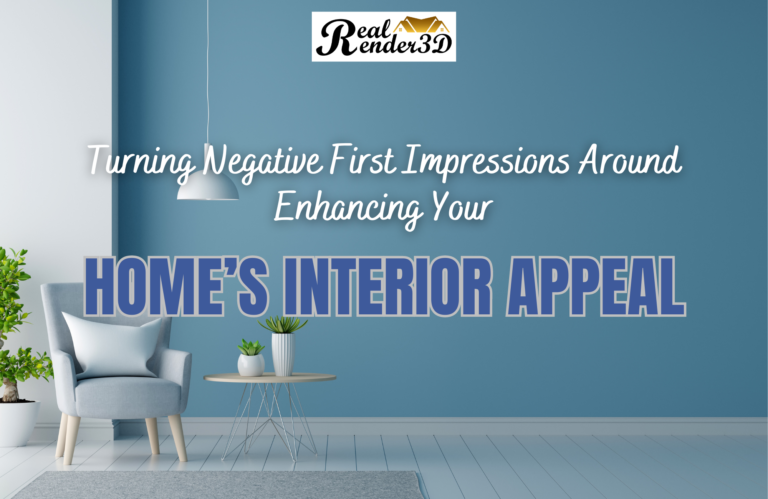Introduction
Bringing architectural designs to life with 3D rendering services requires carefully considering the visual style. The rendered aesthetics greatly impact how concepts are interpreted and the emotions evoked. As such, architectural visualization services providers must collaborate closely with clients to determine the right stylistic direction. This article will explore key factors in selecting an architectural animation style.
Matching Aesthetic to Audience
A realistic visual style identifies practical details for contractors while a stylized approach better conveys ambiance to the general public. Considerfuncs the audience when choosing between 3D interior rendering and 3D exterior rendering aesthetics. Photorealism might suit council approval boards while a client-facing promotional flythrough could use more dramatic lighting. Keep built outcomes in mind.
Aligning to Brand Identity

3D architectural visualization must align with the brand identity being marketed, whether that is mid-century modern minimalism or art deco opulence. Analyze the color palette, materials, lighting, and other visual cues that embody the brand. For instance, a cutting-edge high-tech company would suit sleek futuristic renderings over heritage recreations.
Evoking the Right Emotional Response
The visual style impacts the mood and emotions that designs convey. Softer diffuse lighting and warmer tones make interiors feel more welcoming versus sleek glass and steel exteriors with cooler lighting echoing modernity and progress. Consider what emotional response needs to be evoked whether that’s a sense of home, luxury, innovation, or tranquility.
Conveying Design Intent
Clearly communicating the design intent, spatial ambiance and functionality is vital. More photorealistic 3D architectural rendering may suit interiors where materiality and lighting ambiance take precedence. Whereas stylized animation with enticing visual flair can better capture a bold or complex exterior form. Ensure the style enhances rather than obscures design communication.
Balancing Creative Flair and Technical Details
Though creative expression is important, technical considerations like lighting studies, traffic flows and spatial connections mustn’t be sacrificed. The right balance enables key details to be assessed while still evoking visual impact. For instance, environmentally sustainable designs could showcase green walls and solar panels more prominently through stylization.
Optimizing Render Times

The complexity viable within rendering timeframes and budgets should guide aesthetic choices. Simplified forms, limited lighting, and restrained material variation help streamline standardized renders. More bespoke stylistic choices suit high-end boutique projects. Benchmark example projects of similar scope and customize effort accordingly during 3D architectural visualization.
Showcasing Design in Context
Well-integrated context enhances design showcases by conveying localized ambiance and landscape character rather than isolating architecture artificially. However, limiting context also focuses attention more upon the building itself. Evaluate what context and environs would optimize the design presentation for your audience and purpose.
Futureproofing Your Rendered Views
Consider how photography, film and rendering technology continues advancing. While current trends lean into photorealism, in five years time a signature style could help projects seem fresh rather than dated. Stylized renders avoid becoming obsolete as quickly. Build enough visual flair to wow current and future audiences.
Proofreading The Visualization Approach

Just as text documents require proofing, ensuring architectural visualizations accurately showcase designs requires reviewing from multiple lens. Scrutinize style elements against brand identity, emotional ambiance, storytelling and functionality. Pay extra attention to lighting ambiance and materiality as these greatly impact experiences.
Key Takeaways
In summary, artistic creativity must be balanced with practical communication of architectural design intent when choosing stylistic approaches to 3D architectural rendering and animation services. Carefully evaluate target audiences and benchmarks to optimize digital visualization projects for narrating engaging stories through aesthetically remarkable and technically informative architectural experiences.
Frequently Asked Questions
Photorealism has dominated for architectural rendering in recent years. But more stylized aesthetics are also gaining traction to showcase bold and artistic designs.
It's generally best to develop renders that will stand the test of time rather than chase temporary trending aesthetics. Focus more on showcasing your unique design identity.
3D interior rendering focuses more on materiality, lighting, and ambiance relevant for inhabitation whereas exterior rendering prioritizes conveyance of the overall form, functionality and context.
Yes, analyzing benchmark portfolio examples helps guide clients in selecting the right visual style tailored to their specific branding and design objectives.
Simpler, cleaner renders help planning authorities clearly assess technical details. More artistic options showcase proposals attractively to investors seeking engaging visual impact.
Sleek contemporary designs render the fastest. More complex classical styles with lots of material texture, ornamentation and surrounding context take significantly longer.
Modifying renderer settings, lighting, materials and adding stylized post-processing effects permits flexibility in the visualization aesthetic. But photorealism relies more on detailed modeling.
It depends - stylized conceptual renders showcase sustainable ambitions most excitingly. But photorealism verifies operational considerations most accurately for built outcomes.










